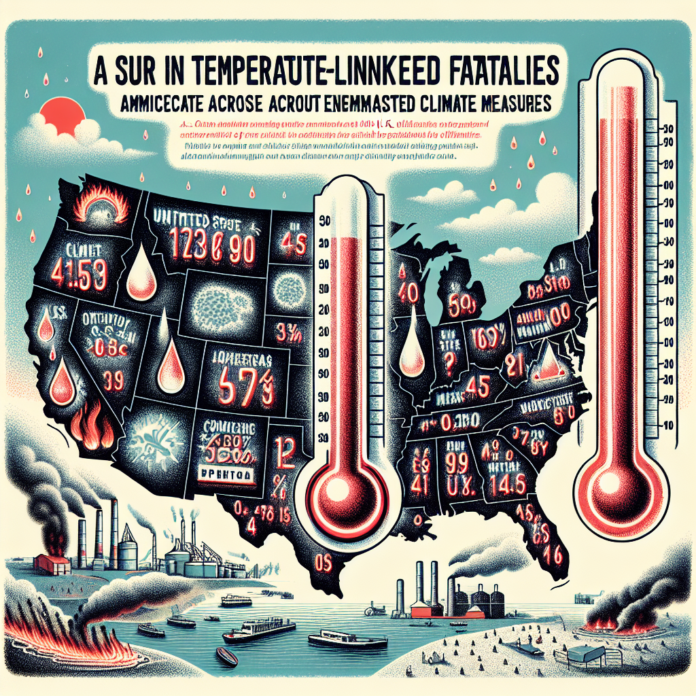Extreme Temperature-Related Deaths Anticipated to Increase in the US Without Stronger Climate Action
Extreme Temperature-Related Deaths Expected to Soar in the U.S. Without Stronger Climate Action
The United States is facing a dire public health crisis as extreme temperature-related deaths are projected to surge dramatically in the coming decades unless stronger climate action is taken. According to recent studies and expert analyses, the increasing frequency and intensity of heatwaves, coupled with inadequate mitigation efforts, could result in a significant rise in mortality rates.
Current Trends and Future Projections
Current trends indicate that the number of heat-related deaths has already been on the rise. Cities like Phoenix, Miami, and New York have experienced record-breaking temperatures, putting vulnerable populations, such as the elderly and those with pre-existing health conditions, at greater risk. Without substantial intervention, projections suggest that the number of deaths due to extreme temperatures could more than double by the end of the century.
Impact on Vulnerable Communities
Vulnerable communities, including low-income households, minority groups, and the elderly, are disproportionately affected by extreme heat. These groups often lack access to air conditioning, adequate healthcare, and other resources that can mitigate the effects of high temperatures. As a result, they are more likely to suffer from heat-related illnesses and fatalities.
The Role of Urban Heat Islands
Urban heat islands, which occur when cities experience higher temperatures than their rural surroundings due to human activities and infrastructure, exacerbate the problem. Asphalt, concrete, and buildings absorb and retain heat, leading to higher nighttime temperatures and reduced cooling-off periods. This phenomenon further increases the risk of heat-related health issues in densely populated urban areas.
Climate Action and Mitigation Strategies
Experts emphasize the urgent need for comprehensive climate action to address this growing threat. Mitigation strategies include reducing greenhouse gas emissions, transitioning to renewable energy sources, and implementing policies to improve energy efficiency. Additionally, cities can adopt measures such as planting more trees, creating green spaces, and using reflective materials in construction to combat urban heat islands.
Public Health Preparedness
Public health preparedness is also crucial in mitigating the impact of extreme temperatures. Early warning systems, public education campaigns, and community cooling centers can help protect vulnerable populations during heatwaves. Investing in healthcare infrastructure and training medical professionals to recognize and treat heat-related illnesses can save lives.
Global Perspective
The issue of extreme temperature-related deaths is not confined to the United States. Globally, climate change poses a significant threat to public health, with countries around the world experiencing similar challenges. International cooperation and commitment to the Paris Agreement are essential to effectively combat the global climate crisis.
Conclusion
In conclusion, the projected increase in extreme temperature-related deaths in the U.S. underscores the urgent need for stronger climate action. By implementing effective mitigation strategies, improving public health preparedness, and fostering global cooperation, we can reduce the risk of heat-related fatalities and build a more resilient future. The time to act is now, as the cost of inaction continues to rise with each passing year.


